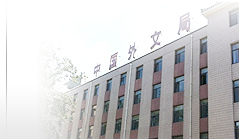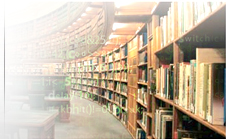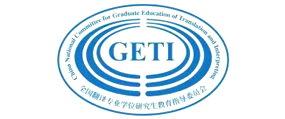译论研究
文化翻译与全球本土化 / 孙艺风 5
中国传统译论的哲学思辨 / 朱瑜 12
西方口译认知研究概述 / 许明 16
Interpreting into a B Language: How It Could Be Raised up to the Conference Interpreting Standards / Marianne Lederer 22
译史纵横
中国翻译传统研究:从转译到从原文译(1949~1999) / 王友贵 27
学术争鸣
再论翻译语境 / 彭利元 33
书刊评介
探索文化翻译的奥秘——评刘宓庆著《文化翻译论纲》 / 章艳 38
翻译教学
建设完整的翻译教学体系 / 穆雷 41
译技探讨
政治文献翻译新探索——十七大文件翻译体会 / 王平兴 45
翻译视点转移的语义分析 / 徐莉娜 51
从翻译“世乒”到翻译“奥运”——兼评实用翻译理论十余年的发展 / 林克难 57
武术翻译初探 / 谢应喜 61
信用证翻译常见错误评析 / 陈建平 65
译家译事
姜椿芳的翻译人生——老一辈翻译家姜椿芳逝世20周年纪念 / 林煌天 69
译业论坛
从母语译入外语:东亚三国的经验对比 / 王恩冕 72
译作鉴析
钱满素《先知》译本评析——兼论文学翻译的精神价值传播 / 秦文华 76
自学之友
·译家译作·
英译汉:The Stage Coach(Washington Irving) / 刘士聪 卞建华 译注 79
翻译导读:形可变,意犹存 / 刘士聪 卞建华 80
汉译英:红海上的一幕(孙福熙) / 史志康 译注 82
翻译导读:用优雅的英语翻译优雅的美文 / 史志康 84
·新人新作·
习作原文1 : Causes Are People / Susan Cobbs 86
习作译文1 : 事业即人 / 苏艳 译 86
习作原文2 : Give Part of Yourself Away / Dr. Harold Taylor 87
习作译文2 : 乐于奉献 / 谢瑾 译 88
点评:看似容易,实则不易 / 陈宏薇 88
第二十届韩素音青年翻译奖竞赛规则及参赛原文
参赛原文及参赛券 91
竞赛规则 封底
词语选登
中国译协对外传播翻译委员会中译英研讨会最新讨论词汇选登 94
英文摘要 / 95
信息广角
第十八届世界翻译大会注册报名工作全面启动(封二)
香港浸会大学翻译及双语传意文学硕士课程(封三)
本刊邮购信息(90)本刊稿约(93)会讯(57)其它(21)
中文摘要
文化翻译与全球本土化
孙艺风 香港岭南大学
摘 要: 这是一个日趋全球化的世界,本土化力量在跨文化交际的全球语境下,使得人们对翻译在跨文化交流中的关键性角色的看法产生范式性的转变。翻译活动催生了全球 化的商业文化,同时也支配着翻译方式的运作。全球化商业文化的出现又触发隐忧:文化间接触的增多可引致文化殖民,并进而形成一个威胁本土文化生存的同质化 世界。因此,为应对全球化而(重新)建立本土文化地域和文化身份的极端重要性毋庸置疑。同时,经由翻译,一种业已普遍化和正处于普遍化进程中的文化语言, 正唤醒并强化对本土文化的身份认知。翻译活动乃本土现实的组成部分,而本土现实与跨族文化为标志的全球化浪潮密切相关。有鉴于此,文化翻译成功与否取决于 本土知识,而后再通过协商的办法,产生出目的语读者可接受的并具有本土色彩的文化话语。
关键词:全球本土化;文化改造;本土知识;翻译策略
中图分类号:H059 文献标识码:A 文章编号:1000-873X(2008)01-0005-07
中国传统译论的哲学思辨
朱瑜* 安徽工业大学
摘 要: 中国传统译论深受儒、道、释思想的侵淫,具体表现为“个人经验”、“实践为中心”以及“直觉诗性体认”的内省式思维范式。就此而言,中国古代译论家关于翻 译现象与本质的体味与思考不啻体现了一种人文和哲学的诗性关怀,其认知模式、研究方法、阐述形式以及术语表达,凡此等等,无不透示出古典文论影响的痕迹。 鉴于此,认真梳理我国传统译论与儒、道、释文化以及古典文论之间的相互关系,并将哲学与诗学理性的“形而上”思辨方法贯穿于整个阐释过程,这一尝试无疑有 助于我们对中国传统译论的长与短、巧与拙进行客观的考问,与此同时,这一取道也可望对文学作品中超乎语符的“味外之旨”的体认与再现提供一种崭新的视角。
关键词:中国传统译论;科学理性;诗学理性;哲学思辨
中图分类号:H059 文献标识码:A 文章编号:1000-873X(2008)01-0012-04
西方口译认知研究概述
许明 河北大学
摘 要:本文以口译的显要特征和信息在人类大脑认知机制中的处理过程为主要线索,概括总结了迄今为止西方口译领域的认知研究,揭示了口译过程中存在的认知问题。
关键词:口译;认知机制;信息处理
中图分类号:H059 文献标识码:A 文章编号:1000-873X(2008)01-0016-06
中国翻译传统研究:从转译到从原文译(1949~1999)*
王友贵 广东外语外贸大学
摘 要: 本文考察中国20世纪“小语种”文学翻译的一个重要传统在当代的转变。这个传统即“小语种”文学翻译的转译传统,即考察5大外国语言文学之外的“小语种”文学翻译从什么时候、如何从以转译为主到实现从原文译的突破性转变,以及这些“小语种”世纪末的文学翻译状况。
关键词:“小语种”;文学翻译;转译;从原文译
中图分类号:H059 文献标识码:A 文章编号:1000-873X(2008)01-0027-06
再论翻译语境*
彭利元 南开大学 湖南工业大学
摘 要:针对李运兴教授“论翻译语境”一文在“翻译语境”概念界定上的不足,结合中西翻译语境研究历史,对“翻译语境”的内涵及其本质属性展开深入探讨,明确了“翻译语境”的定义,揭示了译者的第三人称主体特性以及翻译语境的三大本质属性:主观性、动态性、对话性。
关键词:翻译语境;译者第三人称主体性;主观性;动态性;对话性
中图分类号:H059 文献标识码:A 文章编号:1000-873X(2008)01-0033-05
建设完整的翻译教学体系*
穆雷 广东外语外贸大学
摘 要: 翻译教学在中国内地迅速发展,需要从理论上探讨如何建设完整的翻译教学体系,根据国际翻译教学的现状和国内具体情况划分不同的学位层次,设立每个层次的培 养目标和主要教学内容,探索各层次之间的衔接,逐步改变以往不分层次不分目标大一统教学的做法,使我们的翻译教学逐渐与国际接轨。
关键词:翻译教学;学位层次;培养目标
中图分类号:H059 文献标识码:A 文章编号:1000-873X(2008)01-0041-05
翻译视点转移的语义分析
徐莉娜 中国海洋大学
摘 要: 视点转移是翻译的普遍现象,但视点转移的细节问题尚未引起人们足够的关注。本文以格雷马斯提出的意义基本结构理论为依托,探讨了翻译视点转移的前提和过 程、视点的取向、限度和效度问题,分析了作者视点和译者视点之间的关系,指出视点转移不可超出原文的语义关系范畴,否则,译文就会偏离原文的语义内容。
关键词:视点转移;翻译焦点;语义关系结构
中图分类号:H059 文献标识码:A 文章编号:1000-873X(2008)01-0051-06
从翻译“世乒”到翻译“奥运”——兼评实用翻译理论十余年的发展
林克难 天津外国语学院
摘 要:本文作者以亲身参加世乒赛和奥运会翻译的体会,介绍了过去十余年间实用翻译的理论发展和成熟。作者引用了大量实际例证,说明在实用翻译中,“看易写”,译前编辑,与ABC模式正在显示出较强的理论指导作用。
关键词:世乒赛;奥运会;看易写;译前编辑;ABC模式
中图分类号:H059 文献标识码:A 文章编号:1000-873X(2008)01-0057-04
武术翻译初探
谢应喜 上海体育学院
摘 要:武术文本可以分为拳名、拳势和拳理三个层次,不同层次宜采用不同的翻译策略。拳名依据名从主人的原则采取音译(加注);拳势依据功能对等的标准采取 直译(加描述);拳理按照平衡翻译的模式视情况采取直译、释义、归化或加注等策略。同时,武术翻译标准应该是动态的,需要适时更新以适应读者变化了的解码 能力。
关键词:武术;翻译;层次;策略
中图分类号:H059 文献标识码:A 文章编号:1000-873X(2008)01-0061-04
信用证翻译常见错误评析*
陈建平 宁波大学
摘 要:信用证为国际贸易中最为重要的结算方式,然而,近年来,因信用证语言问题引发的纠纷屡有发生。作为一种专门用途英语,信用证起草、翻译时应注意其语言的特殊性及其法律上的功能。本文通过具体实例分析,归纳和总结了信用证的常见误译问题及其翻译基本规律和原则。
关键词:信用证;误译;评析
中图分类号:H059 文献标识码:A 文章编号:1000-873X(2008)01-0065-04
从母语译入外语:东亚三国的经验对比
王恩冕 对外经济贸易大学
摘 要: 以往根据惯例,国际会议只要求口译员进行从外语译入母语的工作。但是,随着越来越多的非西方国家走上国际舞台,从母语译入外语已经成为国际口译界不得不接 受的现实。本文希望通过对近年在中、日、韩三国口译员中进行的同类调查进行对比分析,能够向我国口译培训机构提供有益的参考数据和建议。
关键词:从母语译入外语;口译培训;质量评估
中图分类号:H059 文献标识码:A 文章编号:1000-873X(2008)01-0072-04
钱满素《先知》译本评析——兼论文学翻译的精神价值传播
秦文华 南京师范大学
摘 要: 本文在细读钱满素《先知》译本的基础上阐述了其在思想传递与文学再创作方面的特色,指出要将原作者深邃的思想和优美的语言传递给译文读者,译者必须同时具 备深沉的思考力、丰厚的知识积淀、对东西方语言文化的双重体悟和文学再创作才华。该译文文本既体现理性的思考与交流,又不乏艺术的想象与创作,在契合原文 思想风格与文辞特色的同时再现了散文诗的音形意之美,使译文读者获得求知欲望的满足、道德伦理的教益以及审美愉悦的享受,从而发挥文学翻译传播精神价值的 功能。
关键词:文学翻译;《先知》;钱满素;精神价值
中图分类号:H059 文献标识码:A 文章编号:1000-873X(2008)01-0076-03
文化翻译与全球本土化 / 孙艺风 5
中国传统译论的哲学思辨 / 朱瑜 12
西方口译认知研究概述 / 许明 16
Interpreting into a B Language: How It Could Be Raised up to the Conference Interpreting Standards / Marianne Lederer 22
译史纵横
中国翻译传统研究:从转译到从原文译(1949~1999) / 王友贵 27
学术争鸣
再论翻译语境 / 彭利元 33
书刊评介
探索文化翻译的奥秘——评刘宓庆著《文化翻译论纲》 / 章艳 38
翻译教学
建设完整的翻译教学体系 / 穆雷 41
译技探讨
政治文献翻译新探索——十七大文件翻译体会 / 王平兴 45
翻译视点转移的语义分析 / 徐莉娜 51
从翻译“世乒”到翻译“奥运”——兼评实用翻译理论十余年的发展 / 林克难 57
武术翻译初探 / 谢应喜 61
信用证翻译常见错误评析 / 陈建平 65
译家译事
姜椿芳的翻译人生——老一辈翻译家姜椿芳逝世20周年纪念 / 林煌天 69
译业论坛
从母语译入外语:东亚三国的经验对比 / 王恩冕 72
译作鉴析
钱满素《先知》译本评析——兼论文学翻译的精神价值传播 / 秦文华 76
自学之友
·译家译作·
英译汉:The Stage Coach(Washington Irving) / 刘士聪 卞建华 译注 79
翻译导读:形可变,意犹存 / 刘士聪 卞建华 80
汉译英:红海上的一幕(孙福熙) / 史志康 译注 82
翻译导读:用优雅的英语翻译优雅的美文 / 史志康 84
·新人新作·
习作原文1 : Causes Are People / Susan Cobbs 86
习作译文1 : 事业即人 / 苏艳 译 86
习作原文2 : Give Part of Yourself Away / Dr. Harold Taylor 87
习作译文2 : 乐于奉献 / 谢瑾 译 88
点评:看似容易,实则不易 / 陈宏薇 88
第二十届韩素音青年翻译奖竞赛规则及参赛原文
参赛原文及参赛券 91
竞赛规则 封底
词语选登
中国译协对外传播翻译委员会中译英研讨会最新讨论词汇选登 94
英文摘要 / 95
信息广角
第十八届世界翻译大会注册报名工作全面启动(封二)
香港浸会大学翻译及双语传意文学硕士课程(封三)
本刊邮购信息(90)本刊稿约(93)会讯(57)其它(21)
中文摘要
文化翻译与全球本土化
孙艺风 香港岭南大学
摘 要: 这是一个日趋全球化的世界,本土化力量在跨文化交际的全球语境下,使得人们对翻译在跨文化交流中的关键性角色的看法产生范式性的转变。翻译活动催生了全球 化的商业文化,同时也支配着翻译方式的运作。全球化商业文化的出现又触发隐忧:文化间接触的增多可引致文化殖民,并进而形成一个威胁本土文化生存的同质化 世界。因此,为应对全球化而(重新)建立本土文化地域和文化身份的极端重要性毋庸置疑。同时,经由翻译,一种业已普遍化和正处于普遍化进程中的文化语言, 正唤醒并强化对本土文化的身份认知。翻译活动乃本土现实的组成部分,而本土现实与跨族文化为标志的全球化浪潮密切相关。有鉴于此,文化翻译成功与否取决于 本土知识,而后再通过协商的办法,产生出目的语读者可接受的并具有本土色彩的文化话语。
关键词:全球本土化;文化改造;本土知识;翻译策略
中图分类号:H059 文献标识码:A 文章编号:1000-873X(2008)01-0005-07
中国传统译论的哲学思辨
朱瑜* 安徽工业大学
摘 要: 中国传统译论深受儒、道、释思想的侵淫,具体表现为“个人经验”、“实践为中心”以及“直觉诗性体认”的内省式思维范式。就此而言,中国古代译论家关于翻 译现象与本质的体味与思考不啻体现了一种人文和哲学的诗性关怀,其认知模式、研究方法、阐述形式以及术语表达,凡此等等,无不透示出古典文论影响的痕迹。 鉴于此,认真梳理我国传统译论与儒、道、释文化以及古典文论之间的相互关系,并将哲学与诗学理性的“形而上”思辨方法贯穿于整个阐释过程,这一尝试无疑有 助于我们对中国传统译论的长与短、巧与拙进行客观的考问,与此同时,这一取道也可望对文学作品中超乎语符的“味外之旨”的体认与再现提供一种崭新的视角。
关键词:中国传统译论;科学理性;诗学理性;哲学思辨
中图分类号:H059 文献标识码:A 文章编号:1000-873X(2008)01-0012-04
西方口译认知研究概述
许明 河北大学
摘 要:本文以口译的显要特征和信息在人类大脑认知机制中的处理过程为主要线索,概括总结了迄今为止西方口译领域的认知研究,揭示了口译过程中存在的认知问题。
关键词:口译;认知机制;信息处理
中图分类号:H059 文献标识码:A 文章编号:1000-873X(2008)01-0016-06
中国翻译传统研究:从转译到从原文译(1949~1999)*
王友贵 广东外语外贸大学
摘 要: 本文考察中国20世纪“小语种”文学翻译的一个重要传统在当代的转变。这个传统即“小语种”文学翻译的转译传统,即考察5大外国语言文学之外的“小语种”文学翻译从什么时候、如何从以转译为主到实现从原文译的突破性转变,以及这些“小语种”世纪末的文学翻译状况。
关键词:“小语种”;文学翻译;转译;从原文译
中图分类号:H059 文献标识码:A 文章编号:1000-873X(2008)01-0027-06
再论翻译语境*
彭利元 南开大学 湖南工业大学
摘 要:针对李运兴教授“论翻译语境”一文在“翻译语境”概念界定上的不足,结合中西翻译语境研究历史,对“翻译语境”的内涵及其本质属性展开深入探讨,明确了“翻译语境”的定义,揭示了译者的第三人称主体特性以及翻译语境的三大本质属性:主观性、动态性、对话性。
关键词:翻译语境;译者第三人称主体性;主观性;动态性;对话性
中图分类号:H059 文献标识码:A 文章编号:1000-873X(2008)01-0033-05
建设完整的翻译教学体系*
穆雷 广东外语外贸大学
摘 要: 翻译教学在中国内地迅速发展,需要从理论上探讨如何建设完整的翻译教学体系,根据国际翻译教学的现状和国内具体情况划分不同的学位层次,设立每个层次的培 养目标和主要教学内容,探索各层次之间的衔接,逐步改变以往不分层次不分目标大一统教学的做法,使我们的翻译教学逐渐与国际接轨。
关键词:翻译教学;学位层次;培养目标
中图分类号:H059 文献标识码:A 文章编号:1000-873X(2008)01-0041-05
翻译视点转移的语义分析
徐莉娜 中国海洋大学
摘 要: 视点转移是翻译的普遍现象,但视点转移的细节问题尚未引起人们足够的关注。本文以格雷马斯提出的意义基本结构理论为依托,探讨了翻译视点转移的前提和过 程、视点的取向、限度和效度问题,分析了作者视点和译者视点之间的关系,指出视点转移不可超出原文的语义关系范畴,否则,译文就会偏离原文的语义内容。
关键词:视点转移;翻译焦点;语义关系结构
中图分类号:H059 文献标识码:A 文章编号:1000-873X(2008)01-0051-06
从翻译“世乒”到翻译“奥运”——兼评实用翻译理论十余年的发展
林克难 天津外国语学院
摘 要:本文作者以亲身参加世乒赛和奥运会翻译的体会,介绍了过去十余年间实用翻译的理论发展和成熟。作者引用了大量实际例证,说明在实用翻译中,“看易写”,译前编辑,与ABC模式正在显示出较强的理论指导作用。
关键词:世乒赛;奥运会;看易写;译前编辑;ABC模式
中图分类号:H059 文献标识码:A 文章编号:1000-873X(2008)01-0057-04
武术翻译初探
谢应喜 上海体育学院
摘 要:武术文本可以分为拳名、拳势和拳理三个层次,不同层次宜采用不同的翻译策略。拳名依据名从主人的原则采取音译(加注);拳势依据功能对等的标准采取 直译(加描述);拳理按照平衡翻译的模式视情况采取直译、释义、归化或加注等策略。同时,武术翻译标准应该是动态的,需要适时更新以适应读者变化了的解码 能力。
关键词:武术;翻译;层次;策略
中图分类号:H059 文献标识码:A 文章编号:1000-873X(2008)01-0061-04
信用证翻译常见错误评析*
陈建平 宁波大学
摘 要:信用证为国际贸易中最为重要的结算方式,然而,近年来,因信用证语言问题引发的纠纷屡有发生。作为一种专门用途英语,信用证起草、翻译时应注意其语言的特殊性及其法律上的功能。本文通过具体实例分析,归纳和总结了信用证的常见误译问题及其翻译基本规律和原则。
关键词:信用证;误译;评析
中图分类号:H059 文献标识码:A 文章编号:1000-873X(2008)01-0065-04
从母语译入外语:东亚三国的经验对比
王恩冕 对外经济贸易大学
摘 要: 以往根据惯例,国际会议只要求口译员进行从外语译入母语的工作。但是,随着越来越多的非西方国家走上国际舞台,从母语译入外语已经成为国际口译界不得不接 受的现实。本文希望通过对近年在中、日、韩三国口译员中进行的同类调查进行对比分析,能够向我国口译培训机构提供有益的参考数据和建议。
关键词:从母语译入外语;口译培训;质量评估
中图分类号:H059 文献标识码:A 文章编号:1000-873X(2008)01-0072-04
钱满素《先知》译本评析——兼论文学翻译的精神价值传播
秦文华 南京师范大学
摘 要: 本文在细读钱满素《先知》译本的基础上阐述了其在思想传递与文学再创作方面的特色,指出要将原作者深邃的思想和优美的语言传递给译文读者,译者必须同时具 备深沉的思考力、丰厚的知识积淀、对东西方语言文化的双重体悟和文学再创作才华。该译文文本既体现理性的思考与交流,又不乏艺术的想象与创作,在契合原文 思想风格与文辞特色的同时再现了散文诗的音形意之美,使译文读者获得求知欲望的满足、道德伦理的教益以及审美愉悦的享受,从而发挥文学翻译传播精神价值的 功能。
关键词:文学翻译;《先知》;钱满素;精神价值
中图分类号:H059 文献标识码:A 文章编号:1000-873X(2008)01-0076-03
Contents
Cultural Translation and Glocalization / Sun Yifeng 5
A Philosophical Interpretation of Traditional Chinese Translation Theory / Zhu Yu 12
Cognitive Researches on Interpretation in the West: An Overview / Xu Ming 16
Interpreting into a B Language: How It Could Be Raised up to the Conference
Interpreting Standards / Marianne Lederer 22
From Translating through Translations to Translating from the Original: China's Approach to Rendering Literary Works in“Minor”Languages (1949~1999) / Wang Yougui 27
Redefining Translation Context / Peng Liyuan 33
Conceptualizing a System of Translation Pedagogy / Mu Lei 41
A Semantic Analysis of Translation Shifts / Xu Lina 51
Theorizing Pragmatic Translation in China over the Past Ten Years / Lin Kenan 57
Strategies for Translating Wushu Texts / Xie Yingxi 61
Common Errors in Translating L/C / Chen Jianping 65
Interpreting into the B Language: The East Asian Experiences / Wang Enmian 72
Qian Mansu, s Rendition of The Prophet and What It Tells Us
about Literary Translation / Qin Wenhua 76
E/C Translation Practice:The Stage Coach (Washington Irving) / Liu Shicong & Bian Jianhua 79
C/E Translation Practice: A Spectacle over the Red Sea(Sun Fuxi) / Shi Zhikang 82
Han Suyin Award for Young Translators (2008):English and
Chinese Texts for Translation Contest / 91
Abstracts of Major Papers in This Issue / 95
Cultural Translation and Glocalization
by Sun Yifeng (Lingnan University, Hong Kong) p. 5
Abstract: In an increasingly globalized world, localization forces shape a powerful paradigmatic shift in viewing the vital role of translation in the global context of cross-cultural communication. The emergence of globalized commodity culture is attributable to translation and dictates the ways in which translation is undertaken. It also raises the troubling possibility of cultural colonization as a consequence of cross-cultural encounters, thereby creating a homogenized world that threatens to destroy local cultures. It is therefore a question of primary importance to (re)establish cultural location and identity in response to globalization. Through translation, a universalized and universalizing cultural language reawakens and reinforces cultural identification. Translation activities are part of local realities in relation to the global world of transnational cultures. In this respect, indigenous or local knowledge is indispensable to successful cultural translation by means of negotiating an acceptable cultural discourse for the target reader.
Key words: glocalization; localization; cultural transformation; local knowledge; translation strategies
A Philosophical Interpretation of Traditional Chinese Translation Theory
by Zhu Yu (Anhui University of Technology, Ma,an,shan, China) p. 12
Abstract: Deeply rooted in Confucianism, Buddhism and Taoism, the traditional Chinese translation theory provides a framework that integrates“personal experience”,“practical performance”and“direct intuitional perception.”A philosophico-poetic concern pervades the theory, and the cognitive mode, research approach, interpretive and terministic pattern it embodies all point to a deep influence from classical Chinese literary theory. It can thus be argued that a close tie exists among the traditional Chinese translation theory, the classical Chinese philosophy and the classical Chinese literary concepts.
Key words: traditional Chinese translation theory; scientific rationality; poetic rationality; philosophical interpretation
Cognitive Researches on Interpretation in the West: An Overview
by Xu Ming (Hebei University, Baoding, China) p. 16
Abstract: Using the salient features of interpretation and the hierarchical order of human processing of information as its organizing principles, this article surveys the cognitively-oriented researches conducted by Western scholars on simultaneous and consecutive interpretation. On the basis of their findings, the author offers a discussion of the cognitive problems encountered in the processes of interpretation.
Key words: interpretation; cognitive mechanism; information processing
Interpreting into a B Language: How It Could Be Raised up to the Conference Interpreting Standards
by Marianne Lederer(Université Paris III-Sorbonne Nouvelle, France) p. 22
Abstract: The pros and cons of simultaneously interpreting into a foreign language are discussed in this paper. The main difficulties for Chinese-English interpreting are listed and advice is given to trainees on how to work them out one by one. Based on the consensus reached by interpreting schools in the European Union, the paper also lays down directions to trainers on when and how it is advisable to teach simultaneous interpretation into B, and how to make it acceptable to foreign listeners.
Key words: interpreting; B Language; training; EMCI
From Translating through Translations to Translating from the Original: China's Approach to Rendering Literary Works in“Minor”Languages (1949~1999)
by Wang Yougui (Guangdong University of Foreign Studies, Guangzhou,China) p. 27
Abstract: Based on the findings of a recent survey, this article investigates into China’s changing way of translating literary works originally published in“minor”or“non-international”languages. Drawing attention to a gradual shift from indirect to direct translation of this kind of literature, the author discusses when and under what circumstances a breakthrough took place, taking a close look at how literary translations from“minor”languages fared at the end of the 20th century
Key words: “minor”language; literary translation; translating through translations; translating from the original
Redefining Translation Context
by Peng Liyuan (College of Foreign Languages, Nankai University, Tianjin, China) p. 33
Abstract: Dissatisfied with Professor Li Yunxing’s discussion of “translation context” in a recent article, this paper looks into what this concept signifies by referring to how it has been theorized both in China and in the West, and redefines it in terms of three essential features, namely, subjectivity, dynamicity and dialogicity.
Key words: translation context; third-person; translator; subject of translation; subjectivity; dynamicity; dialogicity
Conceptualizing a System of Translation Pedagogy
by Mu Lei (Guangdong University of Foreign Studies, Guangzhou, China)p. 41
Abstract: The rapid development of translation teaching in mainland China calls for the establishment of an adequate pedagogical system in this field. International experiences and domestic circumstances both demand that we set up degree programs at different levels, define the educational objective and the teaching contents for each one and explore the ways to integrate these levels. By gradually changing the current practice in which degree levels and objectives are not differentiated, we can bring domestic translation teaching in line with international standards.
Key words: translation teaching; degree level; training objectives
A Semantic Analysis of Translation Shifts
by Xu Lina (Ocean University of China, Qingdao, China) p. 51
Abstract:Although shifts in any translational activity are unavoidable, it remains unclear how they are motivated, conducted and orientated, and what are the restrictions and the validity criteria applicable to them. Based on A.J. Gremas’s discussion in Sémantique Structurale, this paper examines how shifts take place in translation without going beyond the semantic boundaries of the SL text. It holds that any shift leading to the departure from semantic components of the original is undesirable.
Key words: translation shift; focus of attention; structure of semantic relations
Theorizing Pragmatic Translation in China over the Past Ten Years
by Lin Kenan (Tianjing Foreign Studies University, Tianjin, China) p. 57
Abstract: The theorization of pragmatic translation has made tangible progress in China over the past decade. While only one theory was available twelve years ago to translators working for the 43 WTTC, now we have a host of theories to consult in the translation of Beijing Olympic documents. The author argues that the time-honored principles of xindaya (faithfulness, expressiveness and elegance) might not be a good guideline for such a task, while novel concepts such as kanyixie, “pre-editing”and“A(doption)B(orrow)C(reate)”come in handy in guiding the translators through. The argument is supported by numerous examples the author has gleaned from the translation work he has performed at these two important sports events.
Key words: WTTC; Olympic Games; kanyixie; pre-editing; Adopt Borrow Create mode
Strategies for Translating Wushu Texts
by Xie Yingxi (Shanghai University of Sports, Shanghai, China) p. 61
Abstract: Three components could be identified in a typical wushu text: the name, the routine, and the theory of the boxing under discussion. For their translation, different strategies ought to be adopted. The name should be rendered through transliteration (plus annotation). Literal translation (plus description) applies to the rendering of the routine part. And the theory part should be rendered through a combination of strategies so that a functional equivalence or a balanced translation could be achieved. The criteria for evaluating translations of the wushu texts, moreover, must be flexible and adaptive. They should be adjusted constantly in response to the target readers’ increasing sophistication in dealing with this kind of texts.
Key words:Wushu; translation; levels; strategies
Common Errors in Translating L/C
by Chen Jianping (Ningbo University, Ningbo, China) p. 65
Abstract: L/C is the most important means for payment settlement in international trade. Due to language discrepancies, however, there has been a rise in disputes over its use in recent years. As a unique case of ESP, L/C in English has its own linguistic features and legal functions to which translators should pay close attention. With an analysis of a sample of flawed translations of L/C, this paper sums up frequently occurring errors and their causes, identifying the basic rules and requirements in translation of L/C.
Key words: L/C; mistranslation; analysis
Interpreting into the B Language: The East Asian Experiences
by Wang Enmian (University of International Business & Economics, Beijing, China) p. 72
Abstracts: This paper looks into the practice of interpreting into the B language by comparatively analyzing surveys conducted in recent years among professional interpreters in three East Asian countries, China, Korea and Japan. In the light which these surveys shed, the author offers some suggestions to institutes of interpreters training for dealing with the problems they commonly encounter.
Key words: interpreting; the B language; training; quality evaluation
Qian Mansu's Rendition of The Prophet and What It Tells Us about Literary Translation
by Qin Wenhua (Nanjing Normal University, Nanjing, China) p. 76
Abstracts: This paper reviews Qianmansu’s translation of The Prophet, calling attention to the translator’s talent both in transferring thoughts and in re-creating literary effects. It argues that to translate a literary work of profound thoughts and unique stylistic characteristics, the translator must himself be someone of deep thinking and wide knowledge, with a double understanding of the Western and the Chinese culture and a gift for literary re-creation as well.
Key words: literary translation; The Prophet; Qian Mansu; spiritual value

















